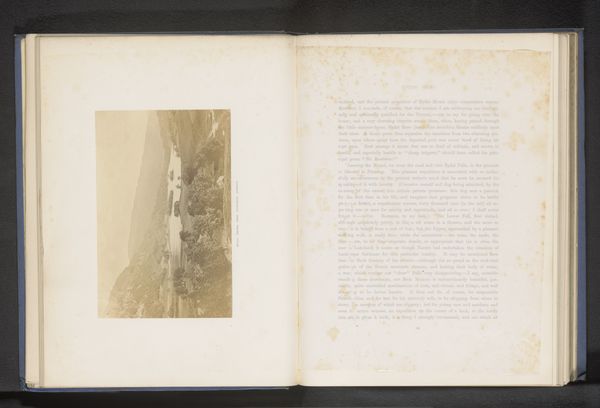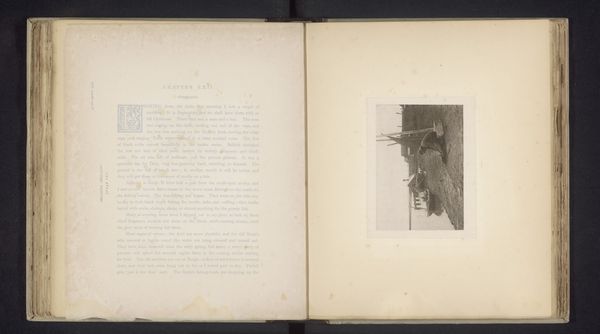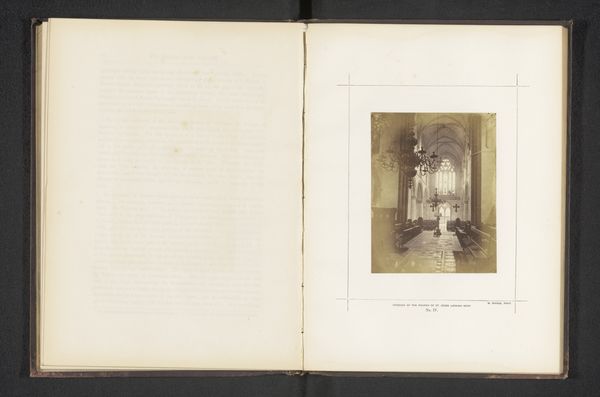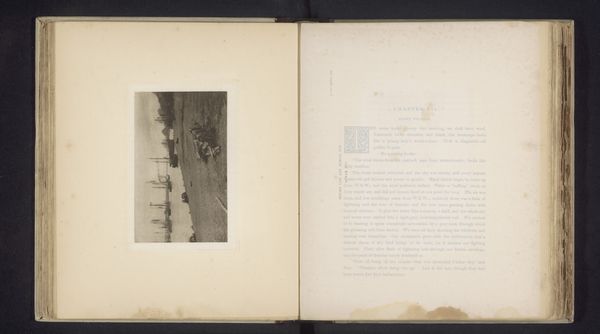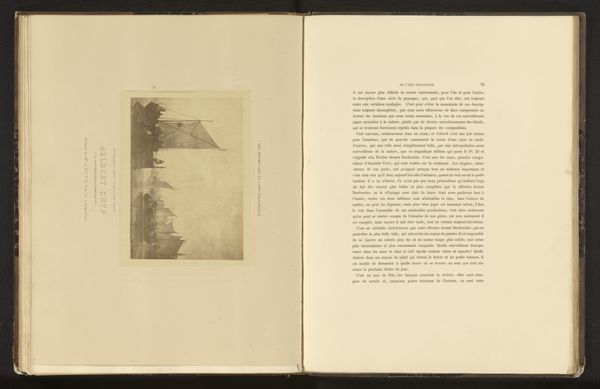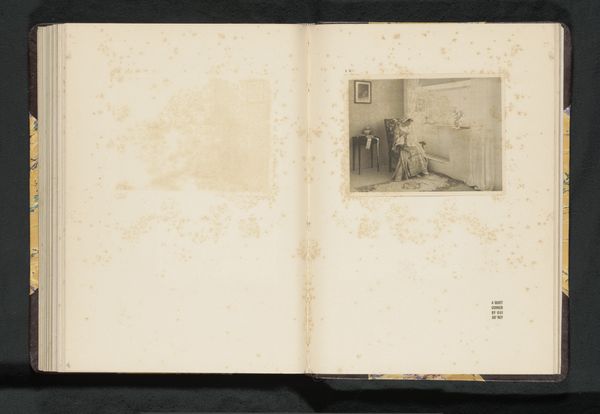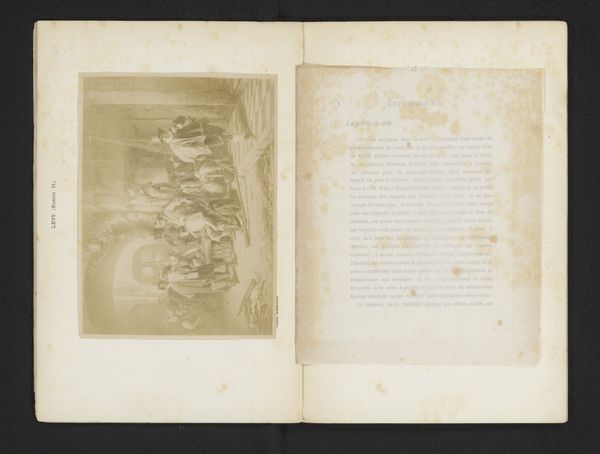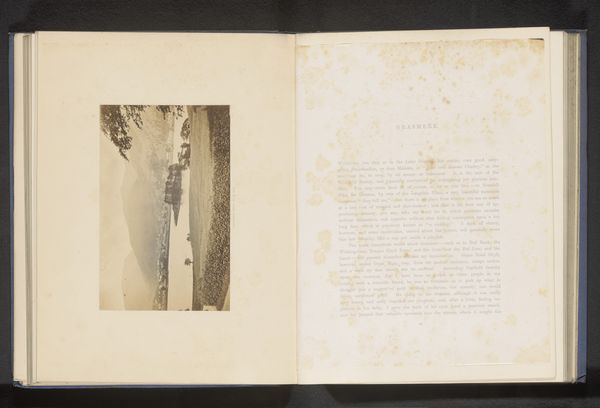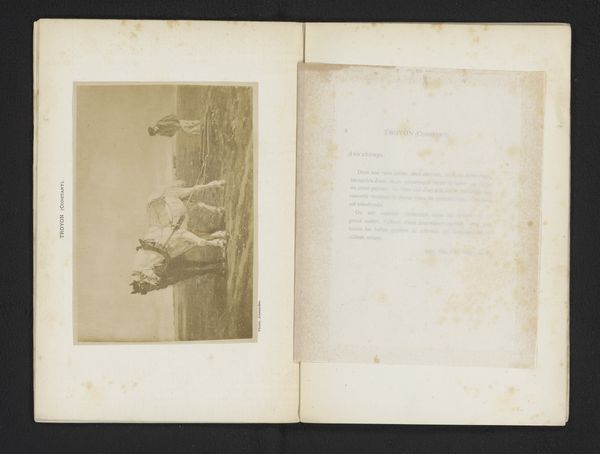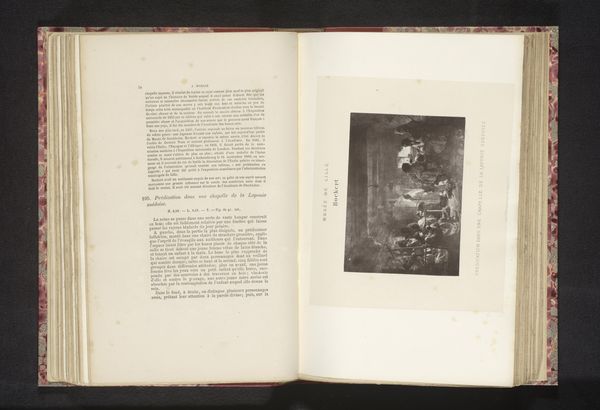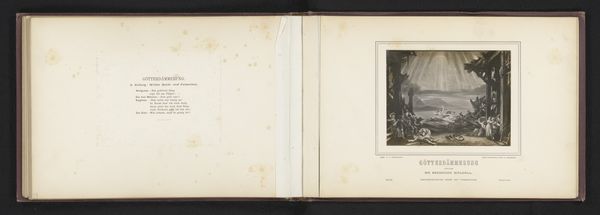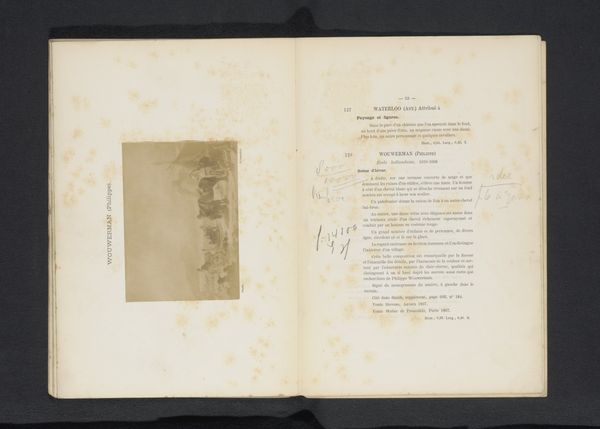
Fotoreproductie van een schilderij van een herderin met twee koeien en een hond door Johannes Hubertus Leonardus de Haas before 1880
0:00
0:00
print, photography
# print
#
dog
#
photography
#
genre-painting
#
realism
Dimensions: height 114 mm, width 175 mm
Copyright: Rijks Museum: Open Domain
Curator: This photographic reproduction captures a painting by Johannes Hubertus Leonardus de Haas, created before 1880. It portrays a shepherdess with her cows and dog, a genre scene rendered in the Realist style. What's your immediate take on it? Editor: It evokes a profound sense of tranquility, yet with this faint whisper of loneliness hanging in the air, almost as if time stood still in a solitary dreamscape. Is it just me, or does this scene seem utterly frozen? Curator: That stillness aligns well with the Realist movement's focus on everyday life. De Haas likely aimed to depict rural existence without idealization. It’s a study in how art can quietly monumentalize ordinary figures. Editor: Precisely. And notice how the landscape itself almost disappears? There’s this delicate haze enveloping the scene, so the figures feel stranded against the infinite. I think the use of soft, diffused light might really deepen this atmospheric effect... and, perhaps subtly amplify the sense of rural isolation. Curator: Interesting observation. Such lighting effects were gaining prominence during that era, coinciding with evolving socio-political attitudes toward the rural population. Genre paintings, especially, became tools for reflecting national identity and values. Were these images portraying the harsh reality or idealising rustic life? The question seems to remain unanswered. Editor: It’s a good point, because the more you scrutinize the composition, the more artificial it becomes. Like you have all the familiar tropes - the herder, cows, dog, sprawling landscape - neatly placed on this picturesque stage. Curator: So you're suggesting a critical awareness of the staging might prompt further considerations. How might we examine the public roles art pieces, such as the image shown in this photograph, came to fulfill at a specific point in history? What expectations may viewers bring to an exhibition of works that seemingly portray rural life? Editor: Exactly! The power is found within its ambiguities - the dance between documentation and idealized creation, that really stirs up such contemplation about art's roles.
Comments
No comments
Be the first to comment and join the conversation on the ultimate creative platform.
